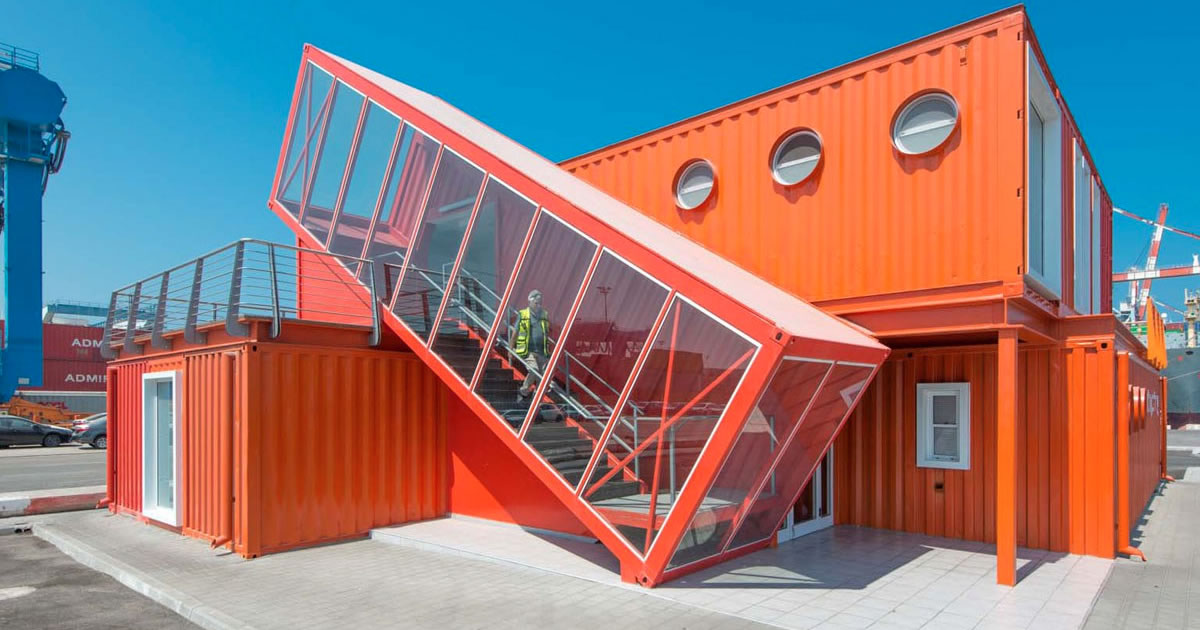
What Are the Environmental Benefits of Reusing Shipping Containers?
In today’s world, where environmental conservation and sustainability are of utmost importance, finding innovative ways to minimise waste and reduce our carbon footprint is crucial. Reusing best shipping containers is one such solution that not only offers practicality but also significant environmental benefits. In this blog post, we will explore how reusing shipping containers can reduce resource consumption, minimise waste generation, lower energy requirements, limit deforestation, mitigate our carbon footprint, promote sustainable design principles, encourage circular economy practices, enhance disaster resilience, foster innovation and creativity, and encourage sustainable living spaces. Let’s dive in!
Reducing Resource Consumption
When we reuse shipping containers for various purposes, we significantly reduce the need for new construction materials. Traditional construction methods require a vast amount of resources, including timber, cement, and steel, which have a substantial impact on our environment. By repurposing shipping containers, we reduce the demand for these materials, thereby conserving natural resources. This reduction in resource consumption helps to minimise deforestation, preserve ecosystems, and protect biodiversity.
Minimising Waste Generation
One of the most significant benefits of reusing shipping containers is the prevention of them ending up in landfills. Shipping containers are typically made from durable materials, such as steel, which take a long time to decompose. By repurposing these containers, we extend their lifespan, reducing waste generation and the strain on landfill capacities. Minimising waste generation is essential for the environment as it reduces pollution, conserves energy, and prevents the release of harmful greenhouse gases.
Lowering Energy Requirements
Repurposing shipping containers for construction offers a notably eco-friendly alternative to traditional building methods. Unlike the energy-intensive processes involved in new construction, which encompass mining, manufacturing, and transporting materials, container repurposing slashes these demands. This efficiency results in substantial energy conservation, leading to a reduced carbon footprint and a more sustainable approach to construction. By capitalising on existing resources, we not only minimise environmental impact but also promote a greener, eco-conscious construction industry.
Limiting Deforestation
Forests play a vital role in climate change mitigation, biodiversity support, and providing essential ecosystem services. Unfortunately, the construction industry’s timber demand fuels deforestation and habitat loss. Employing shipping containers as building materials presents a sustainable solution, curbing the reliance on timber and mitigating deforestation. The preservation of forests holds paramount importance, as it safeguards ecological equilibrium, combats climate change, and protects the habitats of numerous species. By adopting such practices, we can harmonise human development with environmental preservation, fostering a more sustainable and balanced future for our planet and its diverse ecosystems.
Mitigating Carbon Footprint
The construction industry is responsible for a significant portion of global carbon emissions. However, reusing shipping containers can contribute to reducing these emissions associated with new construction projects. By repurposing existing containers instead of producing new materials, we save energy and resources, resulting in a lower carbon footprint. According to a study, reusing one shipping container can save approximately 3,500 kilograms of CO2 emissions.
Promoting Sustainable Design Principles
Repurposing shipping containers aligns with sustainable design principles, such as adaptability and longevity. These principles emphasise the importance of designing structures that can be easily modified and have a long lifespan. Shipping containers are highly adaptable and can be transformed into various functional spaces, including homes, offices, schools, and even art installations. By promoting sustainable design principles through container reuse, we create a built environment that is resilient, efficient, and environmentally friendly.
Encouraging Circular Economy Practices
The concept of a circular economy aims to minimise waste, keep resources in use for longer, and create a closed-loop system. Reusing shipping containers is a prime example of circular economy practices. Instead of discarding containers after their initial use, we extend their lifespan and value by repurposing them for various purposes. This approach reduces the demand for new materials, conserves resources, and minimises waste generation. By embracing circular economy practices, we contribute to a more sustainable and efficient economy.
Enhancing Disaster Resilience
In disaster-prone regions, employing shipping containers as building materials offers substantial improvements in disaster resilience. These containers are renowned for their robust structural integrity and enduring nature. When expertly adapted and fortified, they exhibit remarkable resilience against severe weather phenomena like hurricanes and earthquakes. By harnessing shipping containers for constructing disaster-resistant edifices, we safeguard both lives and assets while concurrently lessening the environmental footprint associated with post-disaster reconstruction efforts. This approach not only bolsters structural integrity but also promotes sustainable disaster mitigation and recovery strategies.
Fostering Innovation and Creativity
The creative potential of repurposing shipping containers knows no bounds. Architects, designers, and artists globally have eagerly taken on the task, crafting remarkable and utilitarian environments. These transformations have birthed trendy coffee shops, pop-up boutiques, distinctive residences, and community hubs. The possibilities for container reuse are boundless. By nurturing innovation and creativity within this realm, we ignite a spark of inspiration for others to venture beyond conventional boundaries, encouraging sustainable solutions that reimagine the potential of these versatile steel boxes.
Encouraging Sustainable Living Spaces
Shipping container homes have gained popularity in recent years due to their sustainability and affordability. These homes often incorporate energy-efficient features, such as solar panels, rainwater harvesting systems, and passive cooling techniques. Container homes have a reduced ecological footprint compared to traditional homes, making them an attractive option for individuals seeking a sustainable lifestyle. By encouraging the construction of container homes, we promote sustainable living practices and contribute to a greener future.
Conclusion:
Reusing shipping containers offers numerous environmental benefits, including reducing resource consumption, minimising waste generation, lowering energy requirements, limiting deforestation, mitigating our carbon footprint, promoting sustainable design principles, encouraging circular economy practices, enhancing disaster resilience, fostering innovation and creativity, and encouraging sustainable living spaces.
As we strive to build a more sustainable future, repurposing shipping containers presents a practical and environmentally friendly solution. By supporting container reuse initiatives and exploring container reuse options ourselves, we can contribute to a more sustainable and ecologically conscious world.
Let’s embrace the potential of shipping container reuse and make a positive impact on our environment.



